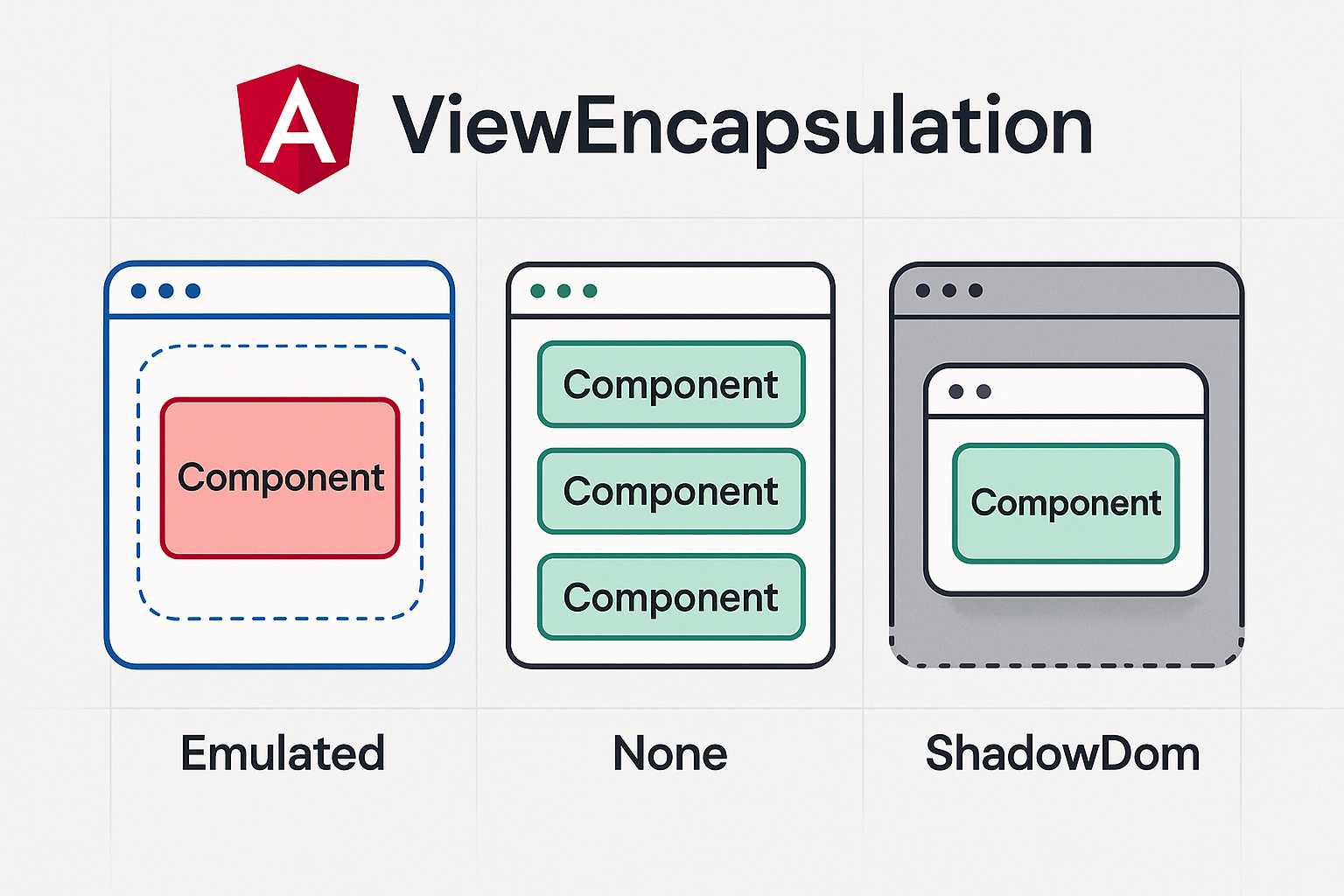When working with Angular, mastering how styles work can take your application from looking decent to looking polished and robust. A key concept in Angular’s styling system is ViewEncapsulation. Understanding how it functions and when to use each mode can help you avoid common pitfalls and make your styles more maintainable.
What is ViewEncapsulation?
In plain terms, ViewEncapsulation determines whether the styles defined in a component affect only that component or bleed out into the global stylesheet (and vice versa). Angular provides three options for encapsulation:
- Emulated (default): Styles are scoped to the component using attributes, mimicking Shadow DOM behavior without using it. Most Angular projects use this by default, which prevents unintentional style leakage.
- None: All styles defined in the component are added to the global DOM, affecting every component. This is essentially the same as traditional CSS.
- ShadowDom: Utilizes the browser’s native Shadow DOM, fully encapsulating styles at the browser level.
How to Use ViewEncapsulation
You can specify the encapsulation mode on a per-component basis. For example:
import { Component, ViewEncapsulation } from '@angular/core';
@Component({
selector: 'app-example',
templateUrl: './example.component.html',
styleUrls: ['./example.component.scss'],
encapsulation: ViewEncapsulation.Emulated // or None, or ShadowDom
})
export class ExampleComponent {}
Practical Use Cases
- Emulated: Use this for general-purpose components. It’s safe, predictable, and protects you from style clashes.
- None: Only use this when you have global styles you intentionally want shared across the entire app, e.g., theming or legacy integrations.
- ShadowDom: Perfect for building reusable UI widgets or web components.
Tips and Best Practices
- Choose the most restrictive encapsulation (Emulated or ShadowDom) unless you have a strong reason to go global.
- Take advantage of encapsulation for third-party components to prevent conflicts.
- For styles that must be shared application-wide (like reset or utility classes), keep them in global stylesheets.
Conclusion
Understanding ViewEncapsulation gives you more control over how your Angular app looks and behaves. With the right approach, you can stop style leakage, minimize unexpected bugs, and build more modular, maintainable components.
Have questions or want to share your experience with ViewEncapsulation? Leave a comment below!


Leave a Reply